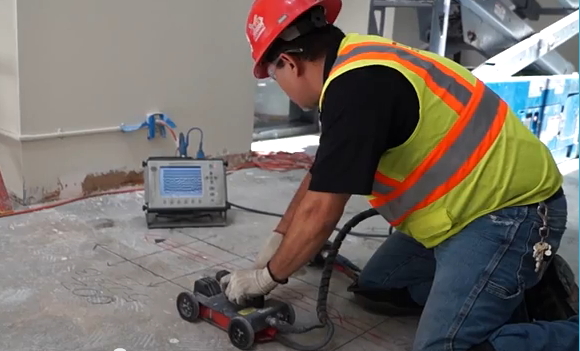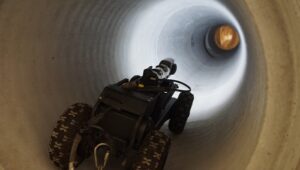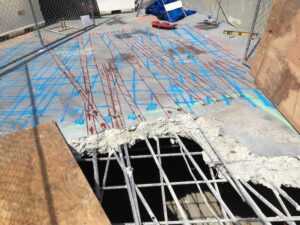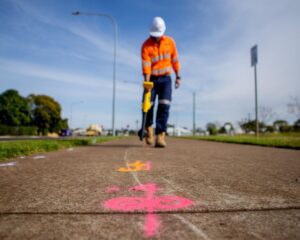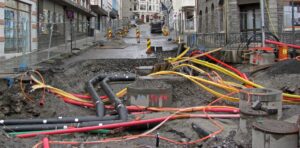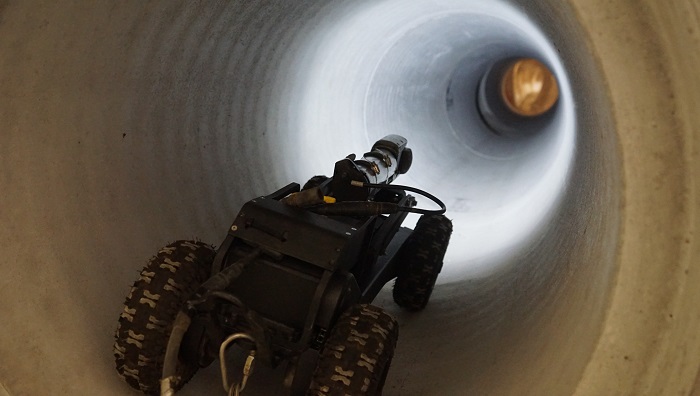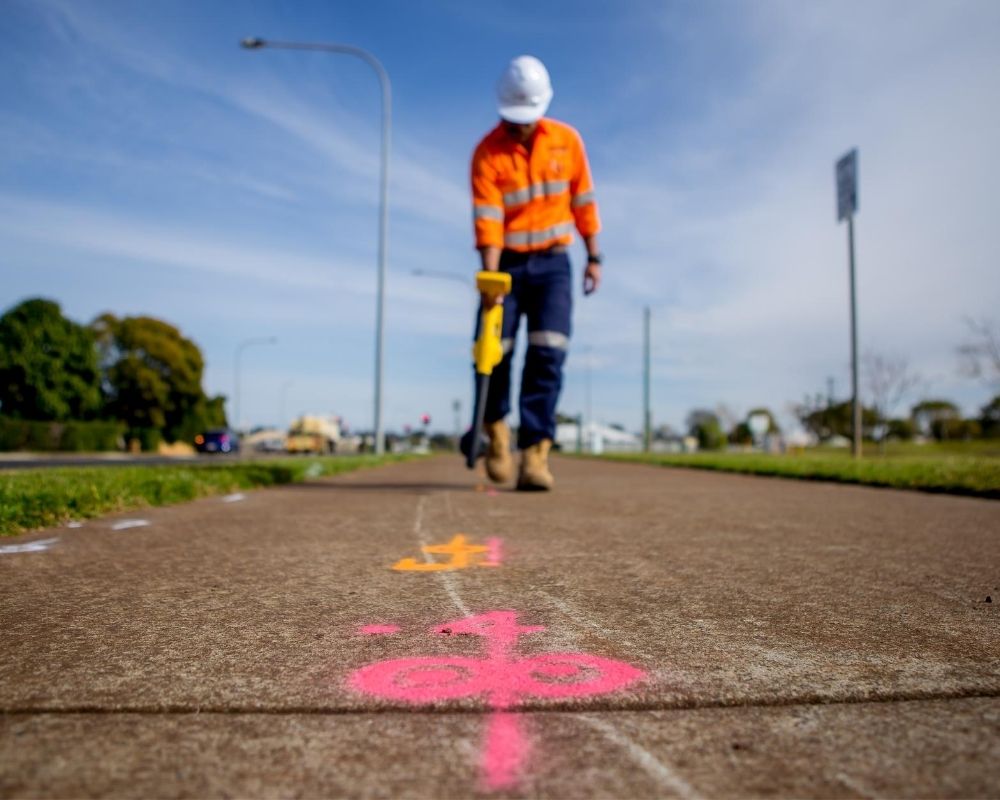Concrete scanning and infrastructure assessment are crucial processes in the construction industry. They play a vital role in ensuring the safety, integrity, and longevity of structures. By employing advanced technologies and assessment techniques, professionals can detect potential issues and evaluate the condition of concrete and other building materials. In this article, we will explore the importance of concrete scanning and infrastructure assessment, the methods employed, and their benefits.
1. Introduction: The Significance of Concrete Scanning and Infrastructure Assessment
Concrete is the backbone of most structures, providing strength and stability. However, over time, it can develop hidden defects, such as cracks, voids, or corrosion of reinforcement. These issues can compromise the structural integrity and pose safety risks. Concrete scanning and infrastructure assessment are essential processes that allow professionals to examine the internal composition and condition of concrete structures without causing any damage.
2. The Process of Concrete Scanning
Concrete scanning involves using various non-destructive testing techniques to determine the internal structure of concrete. By employing these methods, professionals can identify potential issues and make informed decisions regarding repairs and maintenance. The process typically includes the following steps:
- Planning and preparation: Before conducting a concrete scan, experts analyze the project requirements and develop a scanning strategy. They identify the areas to be scanned and ensure the safety of personnel and equipment.
- Selection of scanning technique: Depending on the project requirements and the depth of investigation needed, professionals choose the most suitable scanning technique. This may include ground penetrating radar, concrete x-ray imaging, or ultrasonic testing.
- Data collection and analysis: Using specialized equipment, the professionals collect data from the concrete structure. This data is then analyzed to identify any anomalies or defects within the concrete.
- Reporting: Based on the analysis, a comprehensive report is generated, highlighting the findings, recommendations, and any necessary repairs or maintenance actions.
3. Non-Destructive Testing Techniques
3.1 Ground Penetrating Radar (GPR)
Ground Penetrating Radar (GPR) is a widely used technique for concrete scanning. It utilizes electromagnetic waves to create a subsurface profile of the concrete structure. GPR can detect variations in concrete thickness, locate rebar, detect voids, and identify potential structural issues.
3.2 Concrete X-ray Imaging
Concrete X-ray imaging is another non-destructive testing technique that provides detailed information about the internal structure of concrete. It uses X-ray technology to create high-resolution images, allowing professionals to identify rebar, voids, conduits, and other hidden elements.
3.3 Ultrasonic Testing (UT)
Ultrasonic Testing (UT) involves the use of high-frequency sound waves to evaluate the condition of concrete. It can detect voids, cracks, and delamination, as well as measure the thickness of concrete elements. UT is commonly used for assessing the integrity of concrete foundations, slabs, and walls.
4. Infrastructure Assessment and Evaluation
In addition to concrete scanning, infrastructure assessment involves a comprehensive evaluation of various aspects of a structure. It aims to determine its overall condition, identify defects or deterioration, assess reinforcement conditions, and evaluate material properties.
4.1 Structural Integrity Evaluation
Infrastructure assessment helps evaluate the structural integrity of a building or infrastructure. By assessing factors such as load-bearing capacity, stress distribution, and deformation, professionals can ensure that the structure can withstand its intended purpose and external forces.
4.2 Detection of Defects and Deterioration
Through advanced assessment techniques, professionals can identify defects and deterioration in structures. This includes identifying cracks, spalling, corrosion, and other signs of damage that may compromise the safety and functionality of the infrastructure.
4.3 Assessing Reinforcement Conditions
Infrastructure assessment allows for the evaluation of reinforcement conditions within a structure. It helps identify the presence of rust, corrosion, or inadequate reinforcement, enabling professionals to determine the appropriate repair and reinforcement strategies.
4.4 Evaluation of Material Properties
Assessing material properties is essential to understand the durability and performance of a structure. By analyzing factors such as concrete strength, permeability, and composition, professionals can make informed decisions regarding repairs, upgrades, or replacements.
5. Benefits of Concrete Scanning and Infrastructure Assessment
Concrete scanning and infrastructure assessment offer numerous benefits to the construction industry. Let’s explore some of the key advantages:
5.1 Enhanced Safety and Risk Mitigation
By identifying potential structural issues and defects, concrete scanning and infrastructure assessment help mitigate safety risks. Early detection of problems allows for timely repairs or maintenance, preventing accidents, and ensuring the safety of occupants and workers.
5.2 Cost and Time Efficiency
Proactive maintenance and repairs based on accurate assessments can save significant costs in the long run. By addressing issues promptly, construction companies can avoid expensive emergency repairs and minimize downtime, resulting in cost and time efficiency.
5.3 Preventive Maintenance and Repairs
Concrete scanning and infrastructure assessment enable proactive maintenance. By regularly assessing the condition of structures, potential issues can be identified early on, allowing for preventive repairs and maintenance. This approach helps extend the lifespan of structures and reduces the need for major repairs or replacements.
5.4 Preservation of Historical Structures
Infrastructure assessment techniques are particularly valuable for preserving historical structures. By carefully evaluating the condition of heritage buildings or monuments, professionals can develop restoration plans that ensure the preservation of cultural heritage for future generations.
6. Conclusion
Concrete scanning and infrastructure assessment are vital processes in the construction industry. By employing advanced non-destructive testing techniques and assessment methods, professionals can evaluate the condition of concrete structures, detect defects, and ensure safety and longevity. These processes offer numerous benefits, including enhanced safety, cost and time efficiency, preventive maintenance, and the preservation of historical structures. By prioritizing concrete scanning and infrastructure assessment, construction companies can deliver high-quality, safe, and sustainable projects.
FAQs
1. Why is concrete scanning important in construction projects? Concrete scanning is important in construction projects as it helps detect potential issues within concrete structures, ensuring safety and preventing future problems.
2. What are the commonly used non-destructive testing techniques for concrete scanning? Commonly used non-destructive testing techniques for concrete scanning include ground penetrating radar (GPR), concrete X-ray imaging, and ultrasonic testing (UT).
3. How does infrastructure assessment benefit the construction industry? Infrastructure assessment benefits the construction industry by evaluating the overall condition of structures, identifying defects, and enabling proactive maintenance, thus saving costs and ensuring safety.
4. Can infrastructure assessment be used for historical structures? Yes, infrastructure assessment techniques can be employed to evaluate the condition of historical structures, aiding in their preservation and restoration.
5. How does concrete scanning contribute to cost and time efficiency in construction projects? Concrete scanning contributes to cost and time efficiency by allowing for early detection of issues, preventing expensive emergency repairs, and minimizing project downtime.

